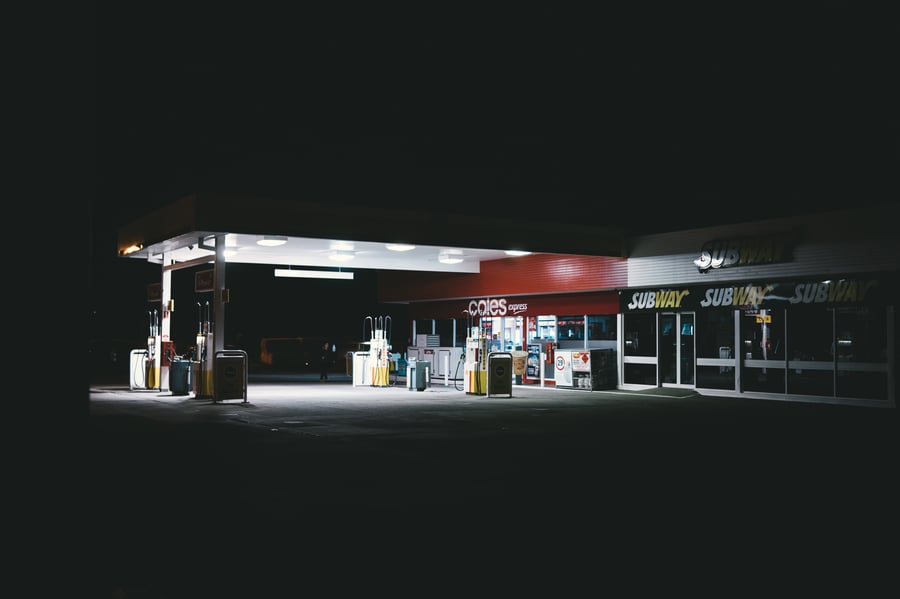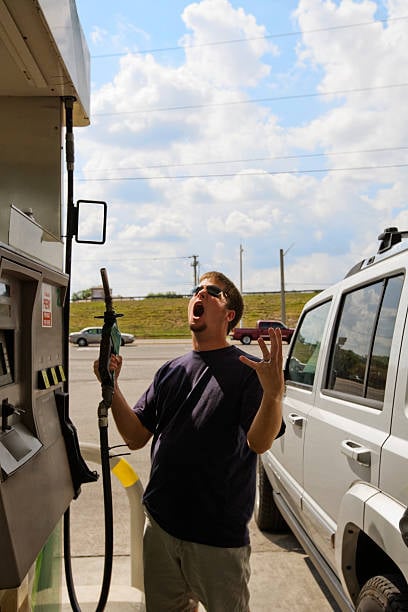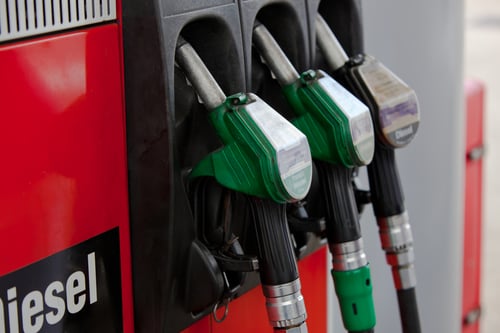Sign Visibility Key to Showcasing Your Brand, Fuel Prices, In-Store Offers

Americans just don’t drive out of a necessity but continue to have a love affair with their cars. Consider that a cars.com survey two years ago found that 73 percent love their car a lot; 69 percent have a significant pride in their vehicle; and 63 percent confessed they service their rides more often than they visit the dentist.
With apologies to Elon Musk, not even the rising popularity of electric vehicles, or the COVID-19 pandemic can stem the tide of Americans needing to fill up at the pump each day.
NACS, the leading global trade association dedicated to advancing convenience and fuel retailing, estimated pre-pandemic that there were nearly 40 million Americans filling up their vehicles each day, some 80 percent at convenience stores.
While COVID-19 work-from-home and remote education curtailed fuel consumption in 2020 by 16 percent, there was still an average of 337 million gallons per day of finished motor gasoline consumed or the equivalent of 8.03 million barrels per day.
The daily dash to top off the tank is an opportunity for c-stores and other gasoline retailers to capture their share of business, both at the pump and inside their establishments.
NACS research shows that key drivers for consumers are brand, fuel prices and in-store amenities which means that signage and sign visibility continue to play a key role in a competitive market with low margins.
Gas Price Signs Essential in Driving Business
Signs play a key role for c-stores, especially those towering signs that attract those driving in the area by announcing brand identity and current fuel prices.
Sign visibility is crucial because almost 80 percent of Americans continue to purchase fuel when they happen to be running low, when their low fuel indicator light has come on, or they spot a cheap gas price.
NACS survey found consumers typically buy gas when:
- 58 percent: They are running low, and it is convenient to stop.
- 17 percent: Often because they keep the tank full.
- 11 percent: The gas indicator light comes on.
- 9 percent: They see a cheap gas price.
- 4 percent: Creature of habit; they always buy gas on a certain day/time.
- 1 percent: They are going into the store to buy something.
Signs that announce gas prices are essential as 59 percent of consumers said that price is the most important factor in selecting where to buy gas.
And while there are apps for everything in 2021, including where to find cheap gas prices, drivers continue to hunt for fill-up bargains the old-fashion way – by scanning the horizon while on the road. NACS asked consumers how they shop for gas and found that:
- 63 percent: The store’s gas price sign.
- 16 percent: The store’s loyalty card or other gas discount.
- 11 percent: The store’s reputation for low prices.
- 9 percent: The price posted on a website or online app.
Brand Loyalty Continues to Grow Among Drivers
The NACS found that brand loyalty has almost doubled among drivers in six years, making signs important as they establish brand identity and capture traffic looking for a specific retailer.
NACS research found that gas customers saying they prefer a specific brand or chain to fill up increased from 31 percent in 2012 to 59 percent in 2019.
It may come of no surprise that part of that loyalty is that a brand usually has lower gas prices, which again shows the importance of signage announcing both brand and pricing.
Here is the rundown on why customers prefer a specific store/chain:
- 59 percent: It usually has lower prices.
- 47 percent: Quality of fuel.
- 36 percent: Loyalty program with chain.
- 18 percent: Quality of items inside the store.
- 18 percent: Quality of store employees.
- 16 percent: Loyalty program with individual store.
More Drivers Are Coming into the Store
The role of signage does not stop once a customer is attracted to the location, but on-site smaller signage is key to getting customers to come into the store. It’s no secret that with low margins at the pump, retailers that want to turn a healthy profit, need customers to make purchases inside their stores.
The good news is that for the first time since NACS started their surveys, most drivers (52 percent) are coming inside when buying gas, up from 35 percent in 2015. Some 68 percent of drivers aged 18 to 34 are coming inside the store.
What are the drivers doing inside the store? NACS found were:
- 42 percent pay for gas at the register.
- 39 percent buy a beverage.
- 30 percent buy a snack.
- 20 percent buy lottery tickets.
- 19 percent use the restroom.
- 19 percent buy a tobacco product.
- 13 percent buy a sandwich or meal.
- 13 percent buy gum/mints.
- 12 percent use the ATM.
- 11 percent buy beer or wine.
- 9 percent bought grocery items.
While this survey was released just prior to the pandemic, NACS research last summer showed an increase for in-store purchases in 2020 despite the fuel sales slump.
Contact PWM today to find out how our high-quality electronic price signs can help your c-store or gas retail location capture traffic and drive business inside.






